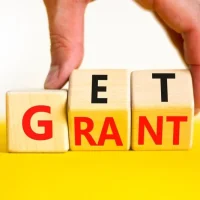Fundraising events serve as a vital lifeline for non-profit organizations, providing essential resources to support their missions and initiatives. These events not only generate financial support but also foster community engagement and raise awareness about the causes they champion. From galas and auctions to fun runs and bake sales, the variety of fundraising events available allows organizations to tailor their approach to fit their unique goals and audience.
In an era where competition for donor attention is fierce, creating memorable and impactful fundraising events is more important than ever. The success of a fundraising event hinges on careful planning, creativity, and a deep understanding of the target audience. Organizations must consider their mission, the interests of their supporters, and the resources available to them.
By aligning the event with the organization’s values and goals, they can create a compelling narrative that resonates with potential donors. Ultimately, a well-executed fundraising event can not only meet financial targets but also strengthen community ties and enhance the organization’s visibility.
Choosing the Right Fundraising Event
Selecting the appropriate fundraising event is crucial for maximizing engagement and achieving financial goals. Organizations should begin by assessing their strengths, resources, and the preferences of their donor base. For instance, if an organization has a strong volunteer network, a community-based event like a charity walk or a local festival may be ideal.
Conversely, if the organization has access to high-profile donors, a formal gala or auction could yield significant returns. Additionally, organizations should consider the timing and location of the event. Seasonal factors, local events, and even holidays can influence attendance and participation.
For example, hosting a fundraising event during the holiday season may attract more attendees due to the festive spirit, while summer months might be better suited for outdoor activities. By carefully evaluating these factors, organizations can choose an event that not only aligns with their mission but also maximizes potential donor engagement.
Planning and Organizing the Event
Once the right fundraising event has been chosen, meticulous planning and organization are essential for its success. This process begins with setting clear objectives, including financial goals, target attendance numbers, and desired outcomes such as increased awareness or community involvement. Establishing these benchmarks will guide all subsequent planning efforts and help measure success post-event.
Next, assembling a dedicated planning committee can significantly enhance the event’s execution. This team should include individuals with diverse skills—such as marketing, logistics, finance, and volunteer management—to ensure all aspects of the event are covered. Creating a detailed timeline that outlines key milestones leading up to the event will help keep everyone on track and accountable.
From securing a venue to coordinating catering and entertainment, every detail matters in creating a seamless experience for attendees.
Marketing and Promotion Strategies
Effective marketing and promotion are critical components of any successful fundraising event. Organizations should develop a comprehensive marketing plan that utilizes various channels to reach their target audience. Social media platforms like Facebook, Instagram, and Twitter can be powerful tools for generating buzz and engaging potential attendees.
Creating visually appealing graphics and compelling content that highlights the event’s purpose will encourage sharing and increase visibility. In addition to digital marketing efforts, traditional methods such as flyers, press releases, and community bulletin boards should not be overlooked. Collaborating with local businesses or media outlets can also amplify promotional efforts.
For instance, partnering with a local radio station for an interview or advertisement can help reach a broader audience. Ultimately, a multi-faceted marketing approach will ensure that the event garners attention from both existing supporters and new potential donors.
Engaging Donors and Supporters
Engaging donors and supporters during the fundraising event is essential for fostering a sense of community and encouraging future contributions. Organizations should create an inviting atmosphere that encourages interaction among attendees. This can be achieved through networking opportunities, interactive activities, or even live demonstrations related to the organization’s mission.
By making donors feel valued and connected to the cause, organizations can cultivate lasting relationships. Incorporating storytelling into the event can also enhance donor engagement. Sharing impactful stories about individuals or communities that have benefited from the organization’s work can evoke emotional responses and inspire generosity.
Whether through speeches, videos, or printed materials, these narratives can help attendees understand the significance of their contributions and motivate them to give more generously.
Maximizing Donor Interest and Participation
To maximize donor interest and participation in fundraising events, organizations should consider offering various giving options that cater to different preferences. For instance, providing tiered ticket pricing allows attendees to choose their level of support while still enjoying the event. Additionally, incorporating donation stations or mobile giving options during the event can facilitate spontaneous contributions from attendees who may feel inspired in the moment.
Creating incentives for participation can also drive engagement. Offering exclusive experiences—such as meet-and-greets with speakers or VIP seating—can entice donors to contribute at higher levels. Furthermore, recognizing donors publicly during the event can enhance their sense of belonging and encourage others to follow suit.
By making participation appealing and rewarding, organizations can significantly boost their fundraising outcomes.
Cultivating Relationships with Donors
Building strong relationships with donors is essential for long-term sustainability in fundraising efforts. After the event concludes, organizations should prioritize follow-up communication with attendees to express gratitude for their support. Sending personalized thank-you notes or emails can go a long way in making donors feel appreciated and valued.
Moreover, organizations should keep donors informed about how their contributions are making an impact. Regular updates on projects funded by donations or invitations to future events can help maintain engagement and foster loyalty among supporters. By nurturing these relationships over time, organizations can create a dedicated base of donors who are more likely to contribute in the future.
Evaluating the Success of the Fundraising Event
Finally, evaluating the success of a fundraising event is crucial for understanding its impact and informing future efforts. Organizations should analyze various metrics such as total funds raised, attendance numbers, donor retention rates, and overall participant satisfaction. Gathering feedback from attendees through surveys or informal conversations can provide valuable insights into what worked well and what could be improved.
By conducting a thorough evaluation post-event, organizations can identify best practices and areas for growth in their fundraising strategies. This reflective process not only enhances future events but also demonstrates accountability to donors by showing them how their contributions are being utilized effectively. Ultimately, continuous improvement in fundraising efforts will lead to greater success in achieving organizational goals and fulfilling missions over time.









































